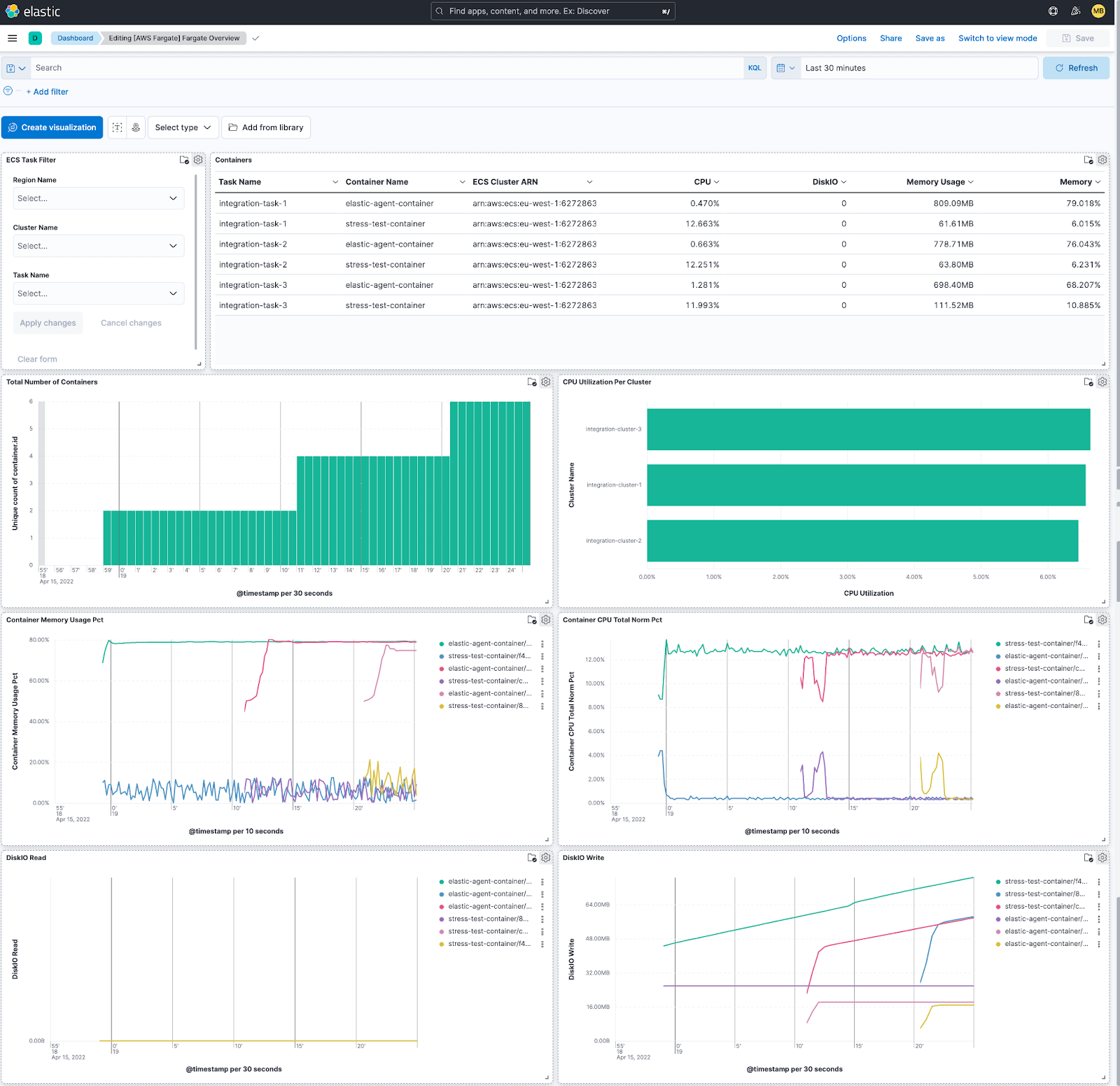Elastic Observability 8.3: Broader observability for cloud, SaaS, and big data

Visibility is crucial for ensuring application performance but it can be difficult to efficiently scale monitoring across all your critical infrastructures, platforms, and services. By simplifying and streamlining data ingest, you can maximize coverage across a wide variety of modern environments.
With Elastic Observability 8.3, DevOps and SRE teams can now leverage additional out-of-the-box integrations for more applications and platforms, gain finer-grain control over agents at scale, and easily ingest logs and container metrics for greater visibility into AWS services.
These new features allow customers to:
- Reduce time to insight with serverless cloud integrations for AWS
- Simplify and centralize agent management with Elastic Agent enhancements
- Optimize performance of SaaS and big data apps
Elastic Observability 8.3 is available now on Elastic Cloud — the only hosted Elasticsearch offering to include all of the new features in this latest release. You can also download the Elastic Stack and our cloud orchestration products, Elastic Cloud Enterprise, and Elastic Cloud for Kubernetes, for a self-managed experience.
Don’t fuss, get on the integrations bus
Elastic's out-of-the-box integrations make data ingestion easy, allowing you to store, search, and analyze data from a large number of sources in your environment. With Elastic Observability 8.3, we have introduced the following new integrations.
- The Elastic Serverless Forwarder is now GA! This AWS Lambda application allows you streamline ingest of logs from multiple Amazon cloud services, including CloudWatch, Kinesis Data Streams, S3, and SQS.
- AWS Fargate allows you to run ECS containers without having to manage servers or clusters of EC2 instances. Elastic’s new AWS Fargate integration (beta) enables monitoring of Amazon ECS containers and includes an out-of-the-box dashboard.
- New out-of-the-box Elastic integrations (beta) for Salesforce and Hadoop give you the visibility you need to troubleshoot performance issues with these platforms. We have also introduced new Elastic Agent integrations for Nagios, Apache Spark, and Spring Boot.

Centralized agent management made easy
Moving observability data across systems in different formats from different sources can be a huge challenge, and it doesn’t scale to install separate agents or edit configuration files on every endpoint. That’s why we introduced Elastic Agent a few releases ago, so you can simplify how you manage agents and integrations with just one thing to install, configure, secure, and scale.
With Elastic Observability 8.3, we have further simplified management of Elastic Agents at scale.
- Rolling upgrades now allow you to specify scheduled maintenance windows for Elastic Agent upgrades. The platform will take care of spreading the load of upgrades across the specified window in order to reduce the burden on the network resources. In addition, you will be able to set a future date and time for maintenance to take place.
- You now have the ability to attach tags to Elastic Agents during installation and see those tags in the Fleet UI. You can filter and apply actions to Elastic Agents based on these tags for greater control over agents at scale.
Try it out
Existing Elastic Cloud customers can access many of these features directly from the Elastic Cloud console. If you’re new to Elastic Cloud, take a look at our Quick Start guides (bite-sized training videos to get you started quickly) or our free fundamentals training courses. You can always get started for free with a free 14-day trial of Elastic Cloud. Or download the self-managed version of the Elastic Stack for free.
Read about these capabilities and more in the Elastic Observability 8.3 release notes, and other Elastic Stack highlights in the Elastic 8.3 announcement post.
The release and timing of any features or functionality described in this post remain at Elastic's sole discretion. Any features or functionality not currently available may not be delivered on time or at all.